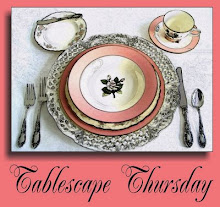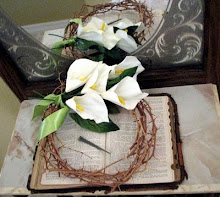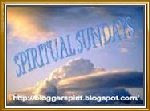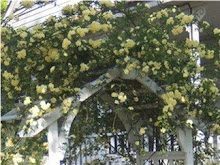 Sunday is the beginning of Advent. The churches I attended most of my life didn't put a lot of emphasis on the Advent season, but I'm now in a church that always celebrates Advent with the lighting of candles, etc. Since I won't be online for a week, I'm posting about Advent today. I hope you enjoy reading about the Advent Season. How do you celebrate Advent?
Sunday is the beginning of Advent. The churches I attended most of my life didn't put a lot of emphasis on the Advent season, but I'm now in a church that always celebrates Advent with the lighting of candles, etc. Since I won't be online for a week, I'm posting about Advent today. I hope you enjoy reading about the Advent Season. How do you celebrate Advent?Advent
Advent is the beginning of the Church Year for most churches in the Western tradition. It begins on the fourth Sunday before Christmas Day, and ends on Christmas Eve. If Christmas Eve is a Sunday, it is counted as the fourth Sunday of Advent, with Christmas Eve proper beginning at sundown.
The word Advent means "coming" or "arrival." The focus of the entire season is the celebration of the birth of Jesus the Christ in his First Advent, and the anticipation of the return of Christ the King in his Second Advent. Thus, Advent is far more than simply marking a 2,000 year old event in history. It is celebrating a truth about God, the revelation of God in Christ whereby all of creation might be reconciled to God. That is a process in which we now participate, and the consummation of which we anticipate. Scripture reading for Advent will reflect this emphasis on the Second Advent, including themes of accountability for faithfulness at His coming, judgment on sin, and the hope of eternal life.
The beginning of Advent is a time for the hanging of the green, decoration of the church with evergreen wreaths, boughs, or trees that help to symbolize the new and everlasting life brought through Jesus the Christ. The first Sunday morning of Advent, in which the church is decorated and the Advent wreath put in place. This service is most often primarily of music, especially choir and hand bells, and Scripture reading, along with an explanation of the various symbols as they are placed in the sanctuary.
Red and Green are more secular colors of Christmas. Although they derive from older European practices of using evergreens and holly to symbolize ongoing life and hope that Christ’s birth brings into a cold world, they are not used as liturgical colors during Advent.
The Advent wreath is an increasingly popular symbol of the beginning of the Church year in many churches as well as homes. It is a circular evergreen wreath (real or artificial) with four or five candles, four around the wreath and one in the center. Since the wreath is symbolic and a vehicle to tell the Christmas story, there are various ways to understand the symbolism. The exact meaning given to the various aspects of the wreath is not as important as the story to which it invites us to listen, and participate.
The circle of the wreath reminds us of God Himself, His eternity and endless mercy, which has no beginning or end. The green of the wreath speaks of the hope that we have in God, the hope of newness, of renewal, of eternal life. Candles symbolize the light of God coming into the world through the birth of His son. The four outer candles represent the period of waiting during the four Sundays of Advent, which themselves symbolize the four centuries of waiting between the prophet Malachi and the birth of Christ.
The Colors of Advent
Historically, the primary sanctuary color of Advent is Purple. This is the color of penitence and fasting as well as the color of royalty to welcome the Advent of the King. Purple is still used in Catholic churches. The purple of Advent is also the color of suffering used during Lent and Holy Week. This points to an important connection between Jesus’ birth and death. The nativity, the Incarnation, cannot be separated from the crucifixion. The purpose of Jesus’ coming into the world, of the "Word made flesh" and dwelling among us, is to reveal God and His grace to the world through Jesus’ life and teaching, but also through his suffering, death, and resurrection. To reflect this emphasis, originally Advent was a time of penitence and fasting, much as the Season of Lent and so shared the color of Lent.
The colors of the candles vary with different traditions, but there are usually three purple, corresponding to the sanctuary colors of Advent, and one pink or rose candle. One of the purple candles is lighted the first Sunday of Advent, a Scripture is read, a short devotional or reading is given, and a prayer offered. On subsequent Sundays, previous candles are re-lighted with an additional one lighted. The pink candle is usually lighted on the third Sunday of Advent. In Churches that use a Service of the Nativity, it is often lighted on the fourth Sunday of Advent, the final Sunday before Christmas.
The light of the candles itself becomes an important symbol of the season. The light reminds us that Jesus is the light of the world that comes into the darkness of our lives to bring newness, life, and hope. It also reminds us that we are called to be a light to the world as we reflect the light of God's grace to others (Isa 42:6). The progression in the lighting of the candles symbolizes the various aspects of our waiting experience. As the candles are lighted over the four week period, it also symbolizes the darkness of fear and hopelessness receding and the shadows of sin falling away as more and more light is shed into the world. The flame of each new candle reminds the worshipers that something is happening, and that more is yet to come. Finally, the light that has come into the world is plainly visible as the Christ candle is lighted at Christmas, and worshipers rejoice over the fact that the promise of long ago has been realized.
The first candle is traditionally the candle of Expectation or Hope (or in some traditions, Prophecy). This draws attention to the anticipation of the coming of a Messiah that weaves its way like a golden thread through Old Testament history. As God’s people were abused by power-hungry kings, led astray by self-centered prophets, and lulled into apathy by half-hearted religious leaders, there arose a longing among some for God to raise up a new king who could show them how to be God’s people. They yearned for a return of God’s dynamic presence in their midst.
The remaining three candles of Advent may be associated with different aspects of the Advent story in different churches, or even in different years. Usually they are organized around characters or themes as a way to unfold the story and direct attention to the celebrations and worship in the season. So, the sequence for the remaining three Sundays might be Bethlehem, Shepherds, Angels. Or Peace, Love, Joy. Or John the Baptist, the Magi, Mary. Or the Annunciation, Proclamation, Fulfillment. Whatever sequence is used, the Scripture readings, prayers, lighting of the candles, the participation of worshipers in the service, all are geared to telling the story of redemption through God’s grace in the Incarnation.
The third candle, usually for the Third Sunday of Advent, is traditionally Pink or Rose, and symbolizes Joy at the soon Advent of the Christ. Sometimes the colors of the sanctuary and vestments are also changed to Rose for this Sunday. However, as noted above, increasingly in many churches, the pink Advent candle is used on the fourth Sunday to mark the joy at the impending Nativity of Jesus.
Advent is one of the few Christian festivals that can be observed in the home as well as at church. With its association with Christmas, Advent is a natural time to involve children in activities at home that directly connect with worship at church. In the home an Advent wreath is often placed on the dining table and lighted at meals, with Scripture readings preceding the lighting of the candles, especially on Sunday. A new candle is lighted each Sunday during the four weeks, and then the same candles are lighted each meal during the week. In this context, it provides the opportunity for family devotion and prayer together, and helps teach the Faith to children, especially if they are involved in reading the daily Scriptures.
The season of Advent has come to be celebrated more in terms of expectation or anticipation. Yet, the anticipation of the Coming of the Messiah throughout the Old Testament and Judaism was not in connection with remembrance of sins. Rather, it was in the context of oppression and injustice, the longing for redemption, not from personal guilt and sin but from the systemic evil of the world expressed in evil empires and tyrants. It is in that sense that all creation groans for its redemption as we witness the evil that so dominates our world (Rom 8:18-25).
The spirit of Advent is expressed well in the parable of the bridesmaids who are anxiously awaiting the coming of the Bridegroom (Matt 25:1-13). There is profound joy at the Bridegroom’s expected coming. And yet a warning of the need for preparation echoes through the parable. But even then, the prayer of Advent is still:
Come, O Come, Emmanuel,
And ransom captive Israel!
Evergreens and The Advent Wreath
Advent is marked by a spirit of expectation, of anticipation, of preparation, of longing. There is a yearning for deliverance from the evils of the world, first expressed by Israelite slaves in Egypt as they cried out from their bitter oppression. It is the cry of those who have experienced the tyranny of injustice in a world under the curse of sin, and yet who have hope of deliverance by a God who has heard the cries of oppressed slaves and brought deliverance!
Excerpts taken from internet-written by Dennis Bratcher Copyright © 2007
Thank you for your interest, please leave a comment! And please do return soon!
Katherine




































4 comments:
I didn't grow up celebrating Advent, but we celebrate it in our home now and enjoy it so much. We keep our wreath on the kitchen table and light them during dinner, read scriptures and a devotional story book. I'm looking foward to tomorrow!
Hugs,
Kelli
Great post, Katherine, I mentioned and linked to this post in my post on Advent calendars last night.
Carrie
Our simple, country church didn't celebrate with Advent Wreaths when I was growing up. My grandmother made the first one I ever saw about 40 years ago. I don't know where she got the idea to do this but once she did it, everyone wanted one too. After that, we always had one in our church.
Celebrating Advent, yes, that's something we danes (Denmark) really feels about ;-)
My few months in blogworld - yours are a favourit, thanks...
Post a Comment